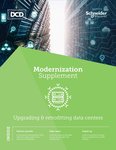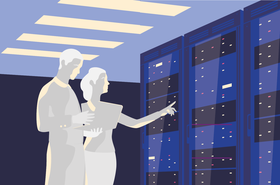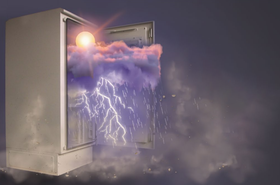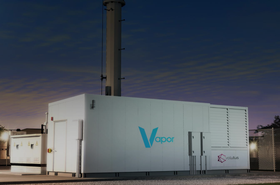Legacy infrastructures are hindering many companies’ ability to embrace the digital transformations needed to support today’s business strategies. Artificial intelligence (AI), edge networks, Internet of Things (IoT) devices and machine learning processes cannot run on outdated hardware and software systems. After many years, some IT infrastructures have now taken on a Frankenstein’s Monster image, where years of applications, software, hardware, and the supporting power feeds were put in place to support workloads that are far less intense than what is demanded by today’s business, entertainment, retail, social and transportation needs.
According to Logicalis’ Global CIO survey, “44 percent of CIOs believe complex legacy technology is a significant barrier to digital transformation.” To achieve modern business agility, performance, and security via IT, upgrades to servers, processing, and power are required. However, this upgrading process also causes additional headaches for data center operators because they don’t always have access to the proper tools for data center infrastructure monitoring (DCIM)—especially to keep tabs on all the additional heat produced. If you can’t accurately and easily measure changing server rack and isle environments, you can’t properly optimize the conditions for efficiency or protect new servers from unauthorized access.
Modern intelligence is needed for modern infrastructures
Upgrading legacy data centers for new, more intense or spread out workloads does not have to add to a data center manager’s burden—if they have full visibility into the environmental aspect of digital transformations. There are key rack-monitoring considerations that are necessary to take into account to balance the environmental needs with the intended, long-term efficiency gains anticipated with digital modernizations. Chief among these considerations is the ability to receive real-time data via:
● Cage level and individual rack access control to secure door locks and monitor card readers.
● In-rack temperature, humidity, and smoke detection.
● Sensors placed outside the rack to monitor temperature, humidity, floor leak detection and differential air pressure across perforated floor tiles and AC air filters.
● USB cameras to enable manual identity verification at the cage and rack levels.
● API and SNMP support for the collection and management of sensor data and alarms.
● Support for a wide variety of DCIM and BMS tools.
Receiving this real-time data will alert IT and facility managers to adverse conditions that could negatively impact workloads as well as expose human errors and unauthorized access to a server rack.
Managing complex urban and extreme remote locations
In terms of environmental monitoring importance, IT managers need to contend with all the new data generated in confined urban spaces that is still feeding into main data centers. According to the United Nations (UN), Department of Economic and Social Affairs, 55 percent of the world’s population lives in urban areas, a proportion that is expected to increase to 68 percent by 2050. These urban areas are rapidly transforming into Smart Cities that are generating an enormous amount of data in the form of IoT. According to a recent study by IDC, IoT spending in the United States is expected to reach $194 billion this year, and among the biggest spending areas are transportation at $71 billion and utilities at $61 billion.
If IDC is reading the IoT tea leaves correctly, urban cities will be relying on a massive, intricate web of remote data infrastructure cabinets housing a diverse set of systems governing devices responsible for:
● Traffic light and crosswalk controls.
● City traffic cam connections.
● Parking system sensor interfaces.
● EV Charging reservation systems with POS.
● Gunshot detection system gateways.
● Shared equipment for 5G carriers.
Each of these remote infrastructure cabinets will have varying tolerances for environmental specifications that must be monitored with the same real-time results as on-premise data centers—perhaps even more so due to their hidden locations where IT personnel are not typically present or readily available. Using sensors to detect floor moisture, shelter leaks, and AC condensation issues will be paramount to ensuring smooth operating edge networks that are spread across and hidden within Smart City borders.
There is also a need to extend “smarts” beyond the city to facilitate IoT data. IT managers in charge of wireless telecom and commercial radio station towers need to check on the condition of assets at extreme, remote locations and—there are a lot of them! According to Wireless Estimator, the top-three U.S. cell tower companies are American Tower, Crown Castle, and SBA Communications respectively. Together, they own over 97,000 cellular towers that require the same environmental monitoring as any data center—especially since they are remote and in difficult-to-get-to locations. Aside from monitoring the equipment’s environment, security is also paramount. To help secure IT environments, sensors need to communicate with USB cameras to alert management on those who are accessing the premises or sensors on server racks to alert on door openings. In addition, smarts are needed for sending information on generators and AC/DC power sources to ensure continued operations.
Enabling management“smarts” via sensor monitoring
Putting the smarts into infrastructure components so they can provide mission-critical information takes a smart rack controller. These controllers serve as a central connection point for environmental monitoring information by collecting and delivering actionable data without needing to change the configuration of existing power distribution devices or IT infrastructure components. Smart controllers are particularly valuable for Smart City and cell tower areas, where remotely managed power distribution units (PDUs) don’t exist or are not particularly desirable.
It’s important to note that any smart controller needs to support a common set of smart sensors with CAT5/CAT6 patch cord interfaces and the ability to be daisy-chained together to increase the flexibility for placement of the sensors and ability to replace damaged cords
Conclusion
Whether data centers exist in public environments, on-premise or within edge networks and at the base of cell towers—workloads will continually need network upgrades to keep from becoming legacy infrastructures. As the network gets transformed and workloads spread out, intelligence will also need to follow so that those responsible for operations will always have a window into environmental and security conditions.
With a fully monitored IT infrastructure, there is no need to wonder if water is seeping in from a recent storm, find out after the fact if someone entered a server rack or not be alerted at the first scent of smoke in the air. A new breed of smart controllers, with a host of valuable sensors, can be easily added to monitor and alert on just about any environmental or power-related condition. Legacy network upgrades that include full monitoring capabilities—without significant architecture disruptions—should be a part of any digital transformation.





